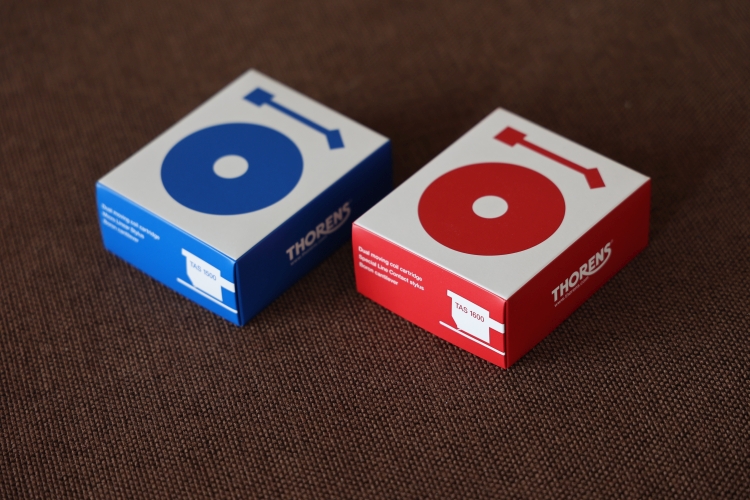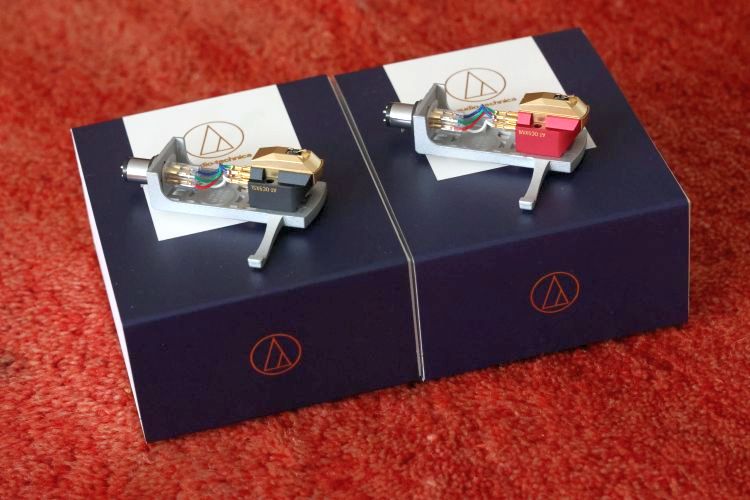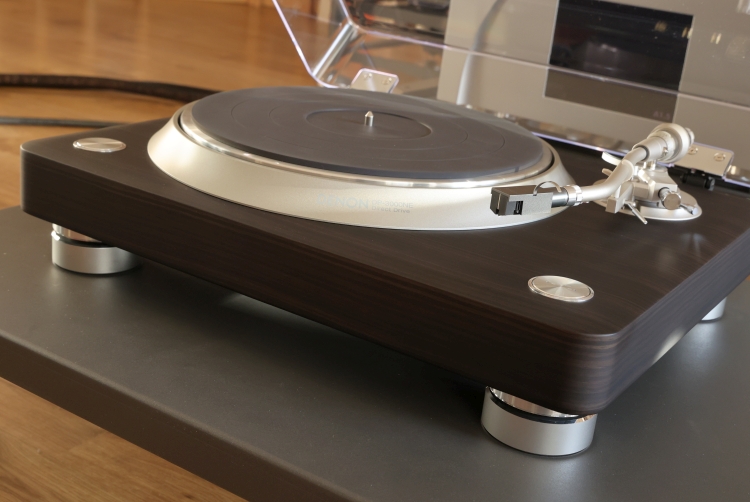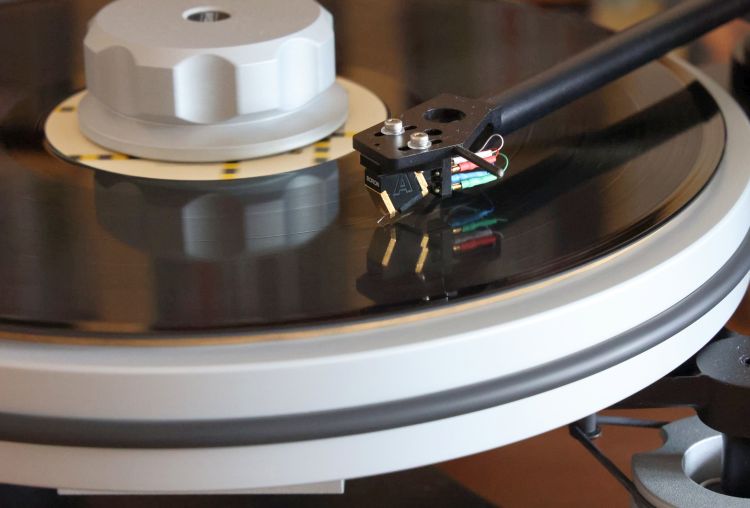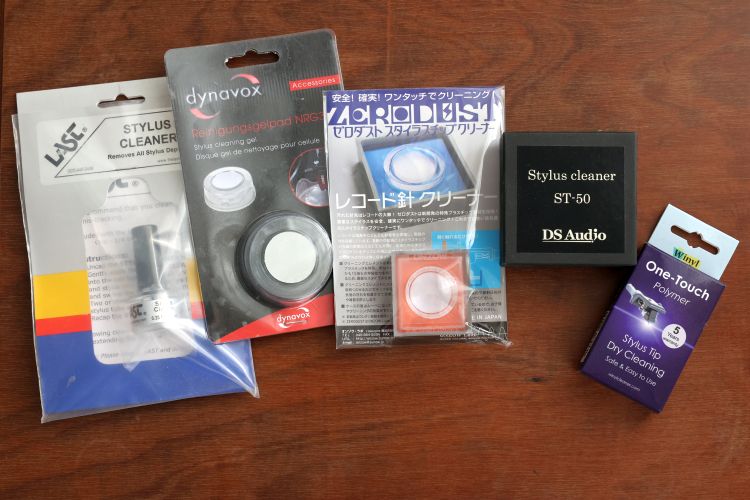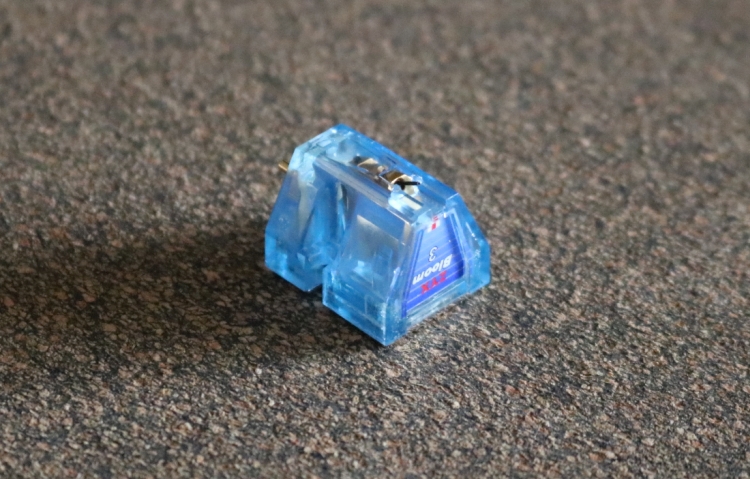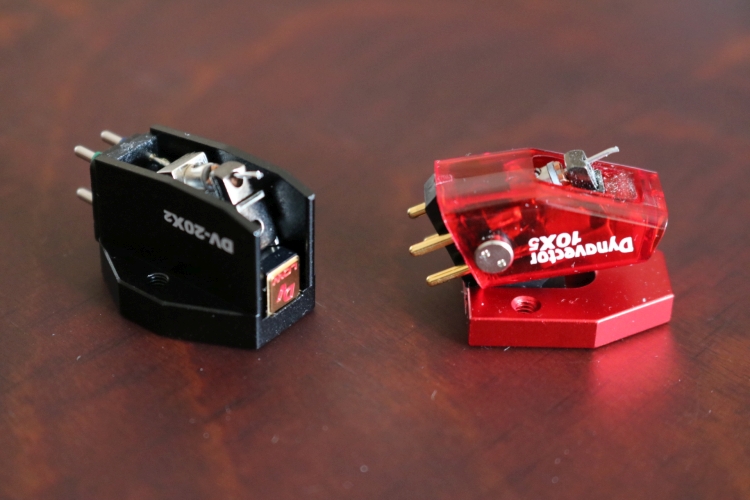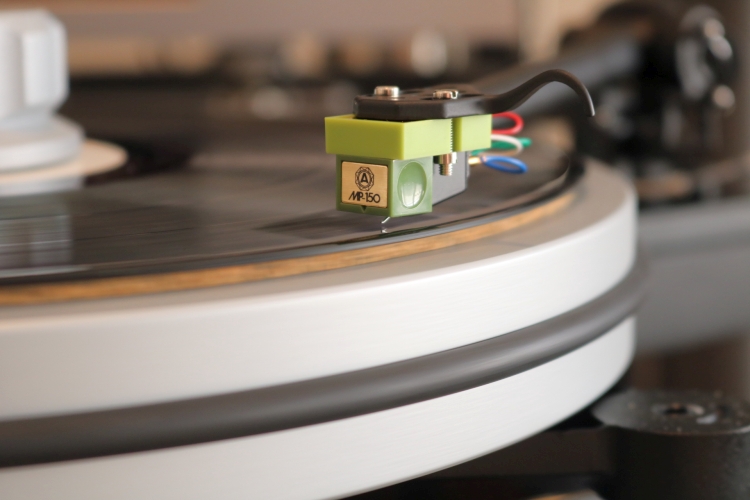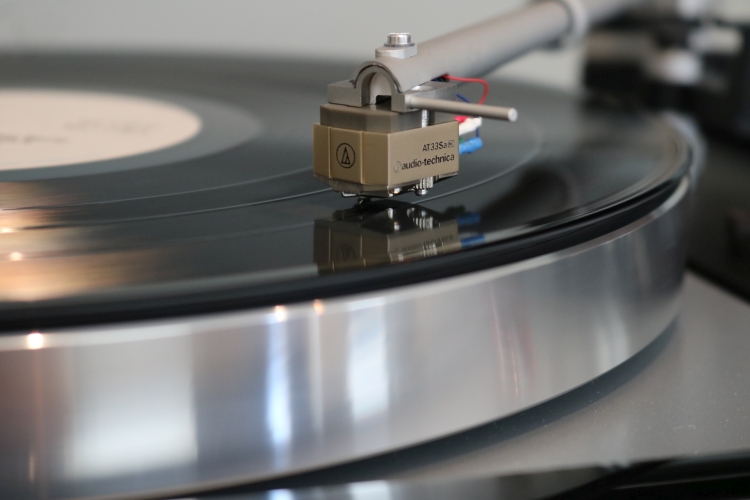
Review sample supplied by PUUR Audio, Video & Domotica
Retail price: 799 euro incl. VAT
Ever since reviewing the Thorens TD1601 turntable, I had been thinking of fitting it with an Audio Technica AT33Sa cartridge. The reason for this is that the TD1601 demo sample was fitted with an AT33EV that matched perfectly. The only downside was that its Elliptical stylus did not track quite as precisely as the Micro-Ridge and Line-Contact styluses to which I am now accustomed.
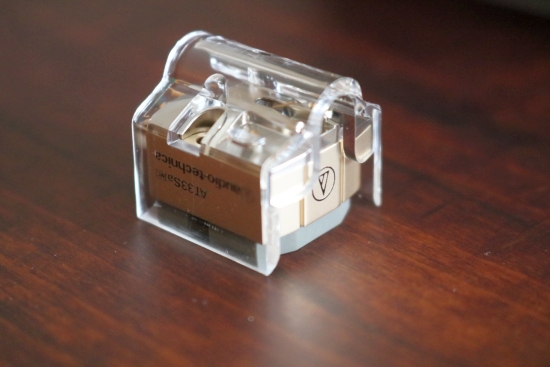
The AT33Sa comes with a sturdy and protective cover with screw-holes so that it can remain attached during mounting. Seems only logical but I’ve used cartridges where the cover needed to be removed to allow the screws to be inserted.
I do have an AT150mlx with a Microline stylus but it’s an MM cartridge and, especially for its species, it sounds quite lean and could do with more body. With the AT33Sa, it was my hope to combine the fuller and richer sound of the AT33EV with the superb tracking of the ATN150mlx. Especially since Audio Technica advertises the AT33Sa cartridge as having high precision as well as robust bass and tonal fullness.
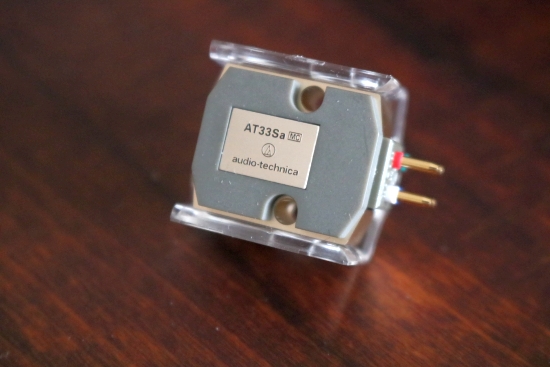
The AT33Sa has a Shibata stylus. While this shape has existed for decades and is not as sophisticated as a Micro Ridge, the Shibata stylus is basically an enhanced line contact and therefore it should definitely track significantly better than the Elliptical AT33EV.
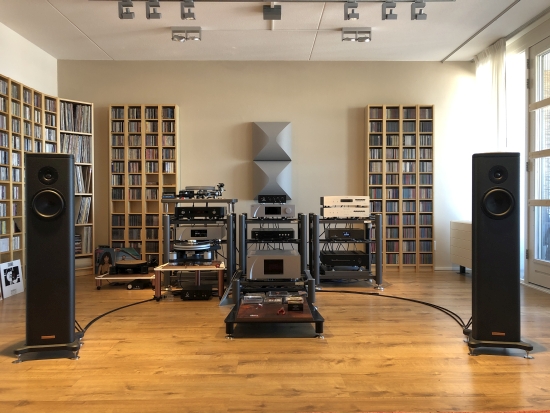
Listening – AVID
Before mounting the cartridge on its intended turntable I wanted to see how it performs with the AVID Sequel in the Audio Origami PU7 arm (12-gram effective mass version with Cardas 33ga internal wiring and super OFC external cable) in the main setup with the CH Precision P1 phono stage set to 325 Ohms and 50dB of gain, the Ayon Stealth preamplifier, the CH Precision A1.5 power amplifier, and Magico S1 MkII speakers.
In this combination, the AT33Sa has a fluid, airy, highly-resolving, and super-refined sound, In these aspects, it outperforms the Dynavector 10×5 MkII High-Output MC cartridge with Shibata III stylus and it does that either with the CH Precision P1 or the AVID Pulsare II phono stage. The PU-7 tonearm has a slightly sweet and gently relaxed sound itself and when combined with the AT33, that aspect is further enhanced. While the combined result is very pleasant, it’s not the last word in terms of bass robustness or dynamic impact. At least, not with this arm.
Tonally, the AT33Sa is neutral, although it is perhaps not entirely linear. It is certainly a little leaner and less forceful in the bass than the 10×5. I was hoping that the cartridge would come close to sounding as robust as the Dynavector, but alas, that’s not the case.
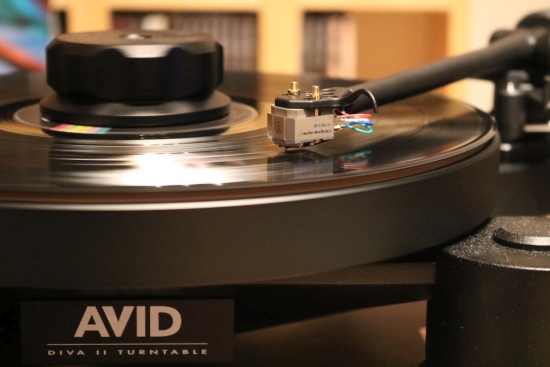
The AT33Sa leans slightly to the romantic side while the 10×5 is a prime example of utter neutrality in all facets. The 10×5’s neutrality or perhaps its stridency, or maybe another aspect of this High-Output MC design, also makes that it does not match well with Rega tonearms such as the RB-220 and TB330. It works technically just fine but results in a bland and matter-of-fact kind of sound.
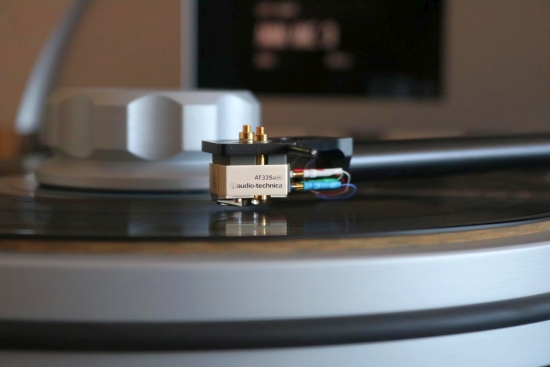
Interestingly, the AT33Sa behaves more uniformly. It worked splendidly with the Audio Origami arm and it extracted significantly higher levels of refinement and smoothness from the Rega tonearms than I was able to, using either the 10×5 MkII or the Nagaoka MP-150 with the same turntable, or the AVID Diva, for that matter.
Of course, cartridge matching remains a delicate balancing act in which the tonearm and the turntable are also decisive for the end result. For instance, although the AT33Sa is ultimately slightly sweet and not as robust in the bass as I prefer, the end result when combined with the very powerful-sounding AVID Sequel is actually more or less comparable in earthiness and slam to the Origin Live Calypso mk4 with Multi-Layer Platter and Illustrious arm with Aidas Rainbow cartridge. The 3.100-euro Rainbow is one of the most robust-sounding cartridges that I know, but in combination with the relaxed and decidedly fluid-sounding Origin Live turntable, evidently, it all balances out. If anything, this perfectly illustrates the importance of (re-) assessing the possibilities for every combination and after every component change.
Interestingly, although the Rainbow cartridge uses a MicroRidge stylus, to my ears, the AT33Sa Shibata stylus seems to track just as cleanly and precisely and it sounds every bit as detailed and refined. Moreover, the AT33Sa is more open on top and airier than either the Dynavector 10×2 MkII or the Aidas Rainbow. But one could also say that the Audio Technica is perhaps more open op top than is strictly neutral.
Robustness and dynamic impact aside, there is also a big difference in tonality between the AT33Sa and the Aidas Rainbow and, to a lesser extent, the 10×5 MkII. The Dynavector’s slightly purer and more direct upper bass and lower midrange strike me as drier and less romantic but also just a bit more realistic. While I would certainly not label the AT33Sa as sounding unnatural and certainly not synthetic in any way, the Aidas Rainbow cartridge does sound more “wooden”. In all fairness, this “woodenness” may well actually be a desirable coloration, but for me, and with the Origin Live turntable, it works very well.
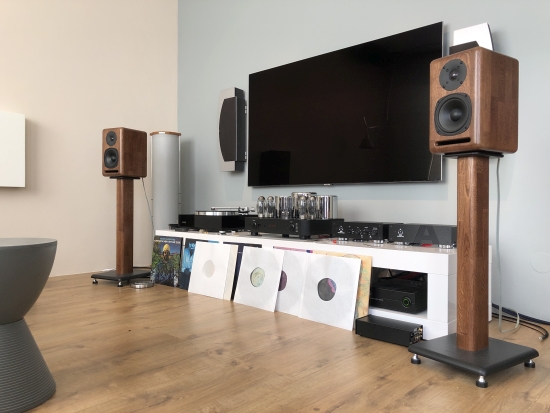
Listening – Thorens
Now it was time to mount the AT33Sa on its intended turntable, the Thorens TD1601. Listened to using the AVID Pulsare II phono stage set to 300 Ohms and the MID gain setting, the Ayon Spirit III KT-150 tube amplifier, and the Xavian Perla Esclusiva speakers, to my satisfaction, the AT33Sa works highly synergistically.
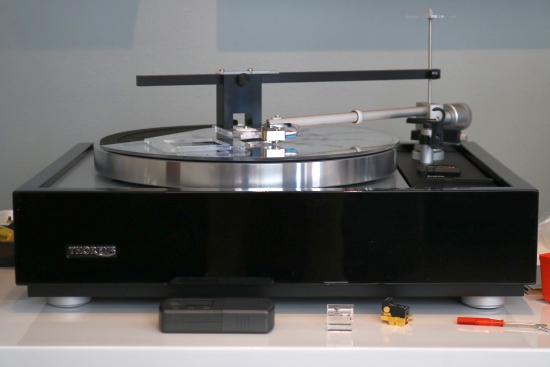
Mounting the AT33Sa using the Acoustical Systems SMARTractor
It has excellent tracking and great soundstaging abilities and superbly refined and airy treble. Coming from the ATN150mlx, the bass is indeed considerably fuller and more robust, and the overall sound is richer, more luxurious, and fuller. I always thought the ATN150mlx to be overly lean and this comparison certainly confirms this, as well as highlighting how relatively poor in harmonics it is.
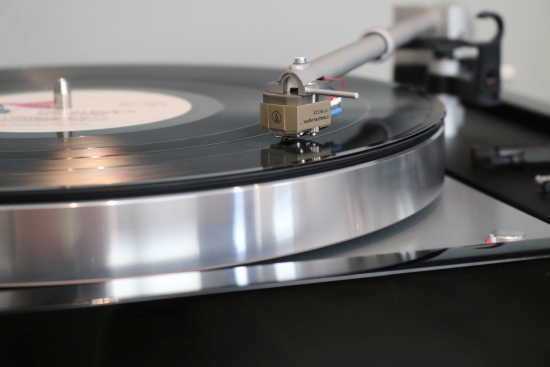
Even though the Shibata stylus is technically less advanced than the Micro Ridge, I did not find that the AT33Sa tracks any less proficiently. The only thing that I did notice was that the ATN150mlx is slightly airier still, but to my ears, that cartridge also most definitely has a rise in treble above 10kHz.
A comparison with the Dynavector DV20x2 Low-Output MC cartridge, which has a Micro Ridge stylus, again confirmed the AT33Sa’s remarkably great tracking. Apart from the Dynavector’s more articulate bass, I did not hear any further increases in resolution or accuracy. In terms of soundstaging, however, there’s a notable difference between these two cartridges. Whereas the former’s soundstaging is wide and deep, the latter tends to focus the sound between the speakers. With its high output 10×5 MkII cousin (and with the AVID Sequel) this aspect goes hand in hand with superlative robustness, dynamics, and impact but with the DV20x2 (with either the AVID or the Thorens), alas, it does not. In either setting, the DV20x2 sounds dynamically withheld and therefore not very exciting and ultimately not very involving. I tried adjusting the gain and the loading but found that the initial settings remained ideal. Apparently, the matches with the AVID and the Thorens do not work synergistically for the Dynavector cartridge.
What’s less well-developed with the AT33Sa, also when combined with the Thorens, remains the bass. It’s not that it’s lacking, it’s actually much more robust than with the ATN150mlx, and certainly full enough but compared to both Dynavectors and the Aidas Rainbow, it’s slightly round. Actually, it’s not just the bass. As heard with the AVID turntable, the cartridge does indeed have a gently sweet, very subtly romantic overall touch. However, since the Thorens has a superbly upbeat sound with very fast transients and exceptional dynamics, the balance is just about perfect.
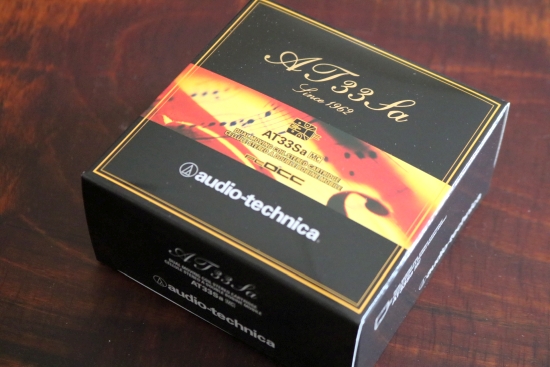
Conclusion
The AT33Sa worked uniformly well, with three different tonearms and two different turntables. It offers superb tracking, wide and deep imaging, and resolution and refinement that are pretty much on par with what Micro Ridge stylii can achieve. The AT33Sa is indeed a major improvement over the ATN150mlx as well as a very significant further refinement of the AT33EV’s qualities. The cartridge may lack the chiseled-from-rock kind of bass and the ultimate incisive attack of the most accurate cartridges but it offers a level of sophistication that is normally only found in much more expensive cartridges. It was said somewhere that the AT33EV is something of a poor man’s Koetsu. Not having heard any Koetsu’s, I can’t confirm that, but I can confirm that the Sa version certainly has all its predecessor’s charm.
Avid Distributor for the NL/Belgium: Hexagon Audio
Audio Technica Distributor for the NL: audio-technica.eu
Manufacturer’s website: Audio Technica
